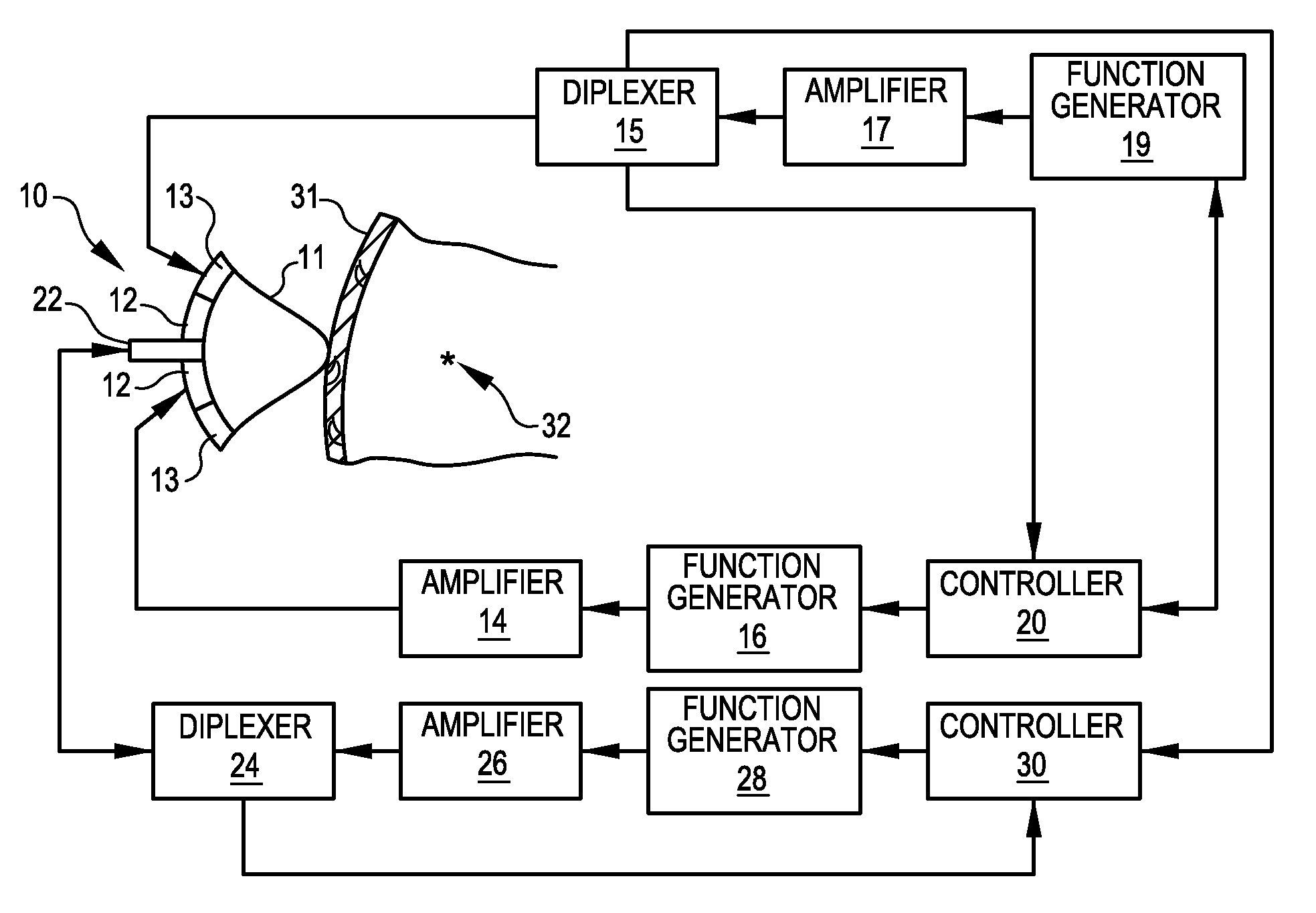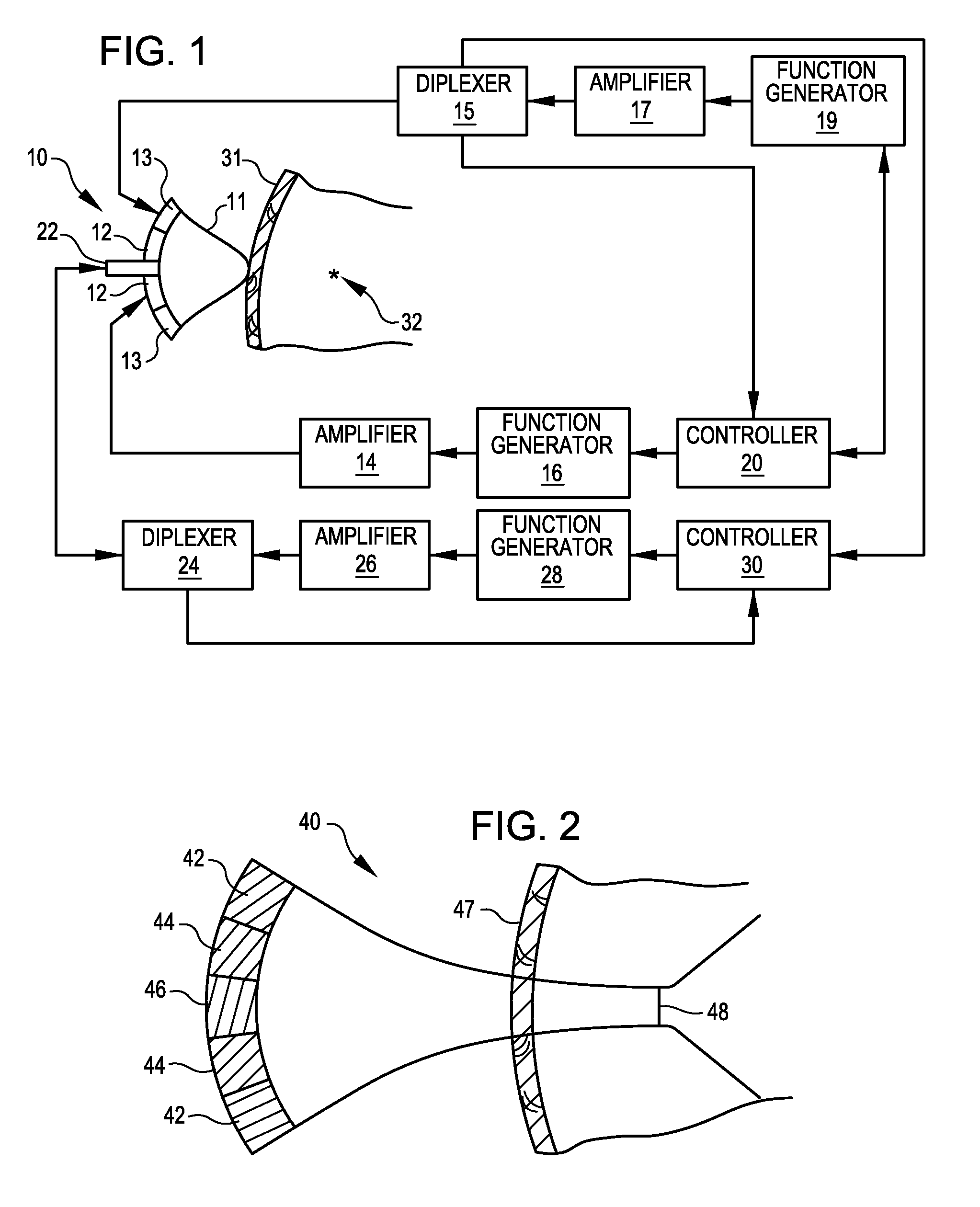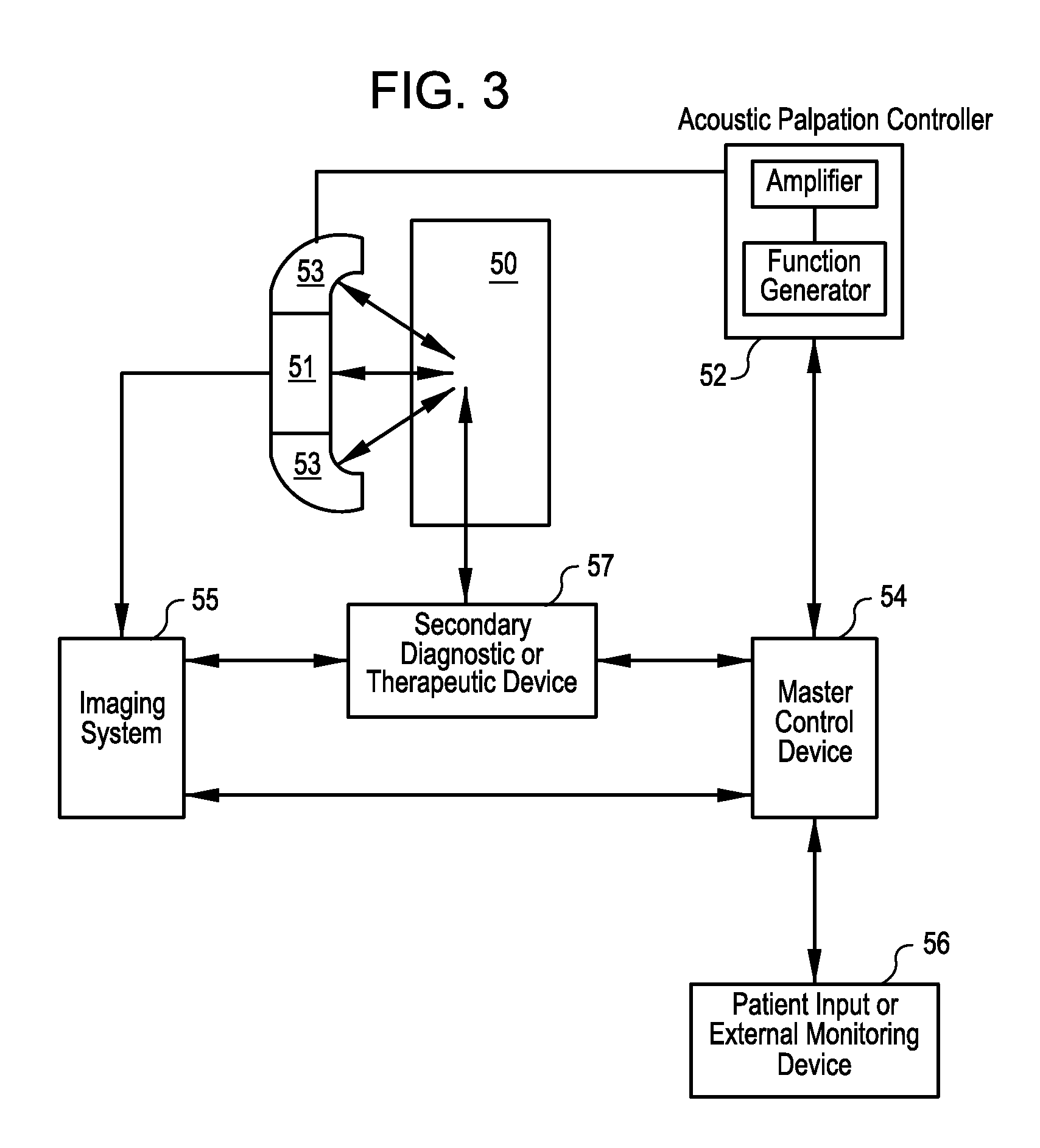Acoustic palpation using non-invasive ultrasound techniques to identify and localize tissue eliciting biological responses and target treatments
a non-invasive, tissue technology, applied in tomography, therapy, application, etc., can solve the problems of not producing a pain response at otherwise normal threshold levels, enlarged or otherwise abnormal, etc., to achieve highly sensitive localization of tooth decay, reduce exposure to ionizing radiation, and effectively transmit ultrasound to tooth surfaces
- Summary
- Abstract
- Description
- Claims
- Application Information
AI Technical Summary
Benefits of technology
Problems solved by technology
Method used
Image
Examples
example 2
[0089]Experimental studies were conducted in an animal model to evaluate whether probing a sensitive tissue with intense focused ultrasound (iFU) produced detectable sensitivity. The prototype ultrasound transducer device consisted of a commercial piezo-electric, flat transducer built into a solid, cylindrical cone shaped aluminum housing having a flat distal face. The dimensions of the housing allowed ultrasound emitted from the transducer to have its focus at the proximal tip of the aluminum housing. The focus of the device was characterized with a needle hydrophone to measure the spatial peak and temporal peak intensity (I_sptp) as described in Miao et al. (2005). The focus of the experimental iFU device was about the size of a grain of rice, extending less than a centimeter from the transducer head with a width of less than half a centimeter onto and into the adjoining tissue. It was not necessary to provide image guidance of the focused ultrasound device, since the focal point ...
example 3
[0099]An experimental protocol was developed to demonstrate that intense focused ultrasound (iFU) can detect peripheral neuropathic pain in the extremity of an animal model of pain. Partial sciatic nerve ligations (pSNL, protocol described in Seltzer et al., 1990 Z. Seltzer, R. Dubner and Y. Shir, A novel behavioral model of neuropathic pain disorders produced in rats by partial sciatic nerve injury, Pain 43 (1990), pp. 205-218) were performed on one group of Sprague Dawley rats on one of their two hind paws, thereby sensitizing that paw.
[0100]The prototype iFU device consisted of a commercial piezo-electric, flat transducer built into a solid, cylindrical cone shaped aluminum housing whose dimensions allowed the ultrasound emitted from the transducer to have a focus at the proximal tip of the aluminum housing. The focus of the device was characterized with a needle hydrophone to measure the spatial peak and temporal peak intensity (I_sptp), as described in Miao et al. (2005). The f...
example 4
[0108]Several human subjects were probed with iFU acoustic radiation forces using an experimental iFU transducer similar to that described above to assess individual sensitivity levels to acoustic doses and to determine appropriate acoustic doses for evaluating a human subject's sensitivity and localizing pain. Acoustic doses were calculated as the acoustic intensity multiplied by the total time the iFU was activated. Twenty sham or actual iFU applications were performed for each acoustic dose for each of the volunteer's two index fingers so that HIFU application was effectively blinded. After each application, subjects were asked if they felt anything. If the answer was no, the test continued. If the answer was yes, the volunteers were asked to describe the sensation and if it was uncomfortable or painful, they were asked to rate their pain on a subjective scale of 1-10, with 10 being the most painful sensation they'd ever experienced. After each set of twenty applications, the int...
PUM
 Login to View More
Login to View More Abstract
Description
Claims
Application Information
 Login to View More
Login to View More - R&D
- Intellectual Property
- Life Sciences
- Materials
- Tech Scout
- Unparalleled Data Quality
- Higher Quality Content
- 60% Fewer Hallucinations
Browse by: Latest US Patents, China's latest patents, Technical Efficacy Thesaurus, Application Domain, Technology Topic, Popular Technical Reports.
© 2025 PatSnap. All rights reserved.Legal|Privacy policy|Modern Slavery Act Transparency Statement|Sitemap|About US| Contact US: help@patsnap.com



